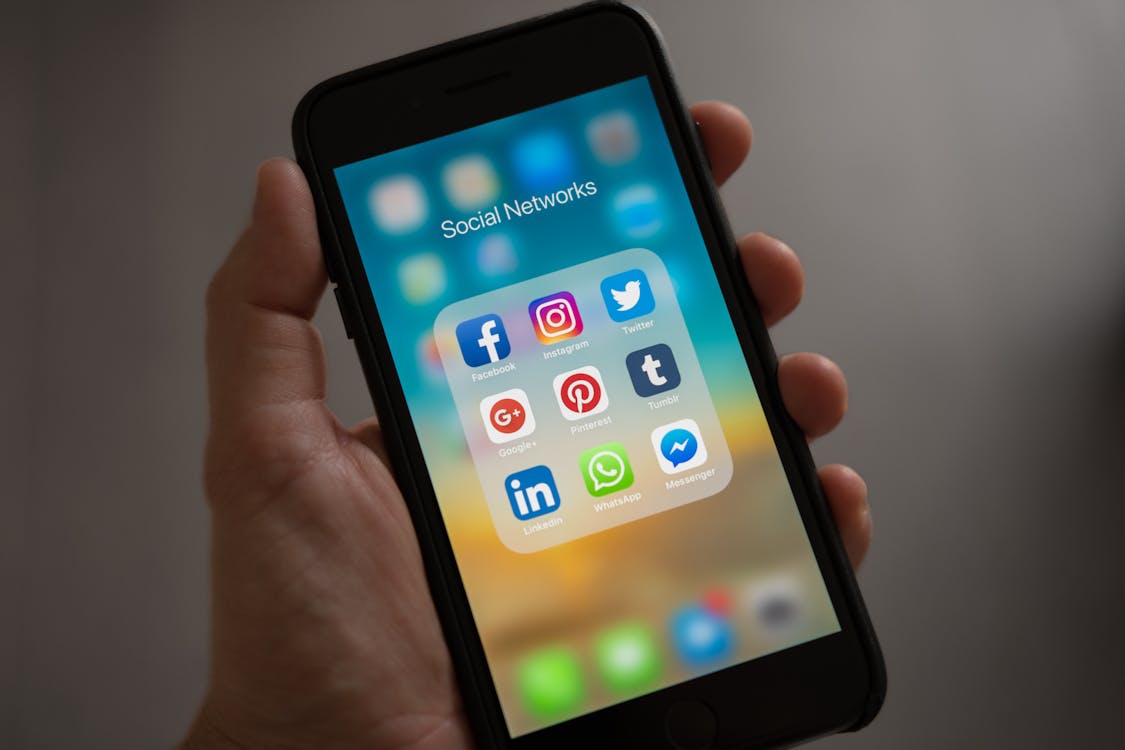In today’s hyper-connected world, businesses cannot afford to overlook the power of social media for lead generation. Social media platforms have transformed from mere networking tools to critical business channels where brands can reach, engage, and convert their target audience into leads and eventually customers.
If your business is struggling to harness the power of social media for lead generation or if you’re just getting started, this guide is for you. We’ll dive deep into actionable strategies, best practices, and insights that can help you make the most of your social media efforts for generating high-quality leads.
1. Why Social Media is Crucial for Lead Generation
With over 4.9 billion people active on social media worldwide in 2024, the potential for businesses to reach new customers is immense. Social media platforms allow businesses to:
- Build brand awareness
- Interact directly with potential customers
- Drive traffic to their website
- Engage in meaningful conversations
- Leverage advertising to target highly specific audiences
When utilized correctly, social media can become a powerful channel for lead generation, allowing businesses to find qualified leads and convert them into paying customers. But it requires more than simply posting updates or promotions.
2. Identifying the Right Social Media Platforms for Lead Generation
Before jumping into specific tactics, it’s essential to identify which social media platforms align with your business goals. Not all platforms are suitable for every business, and each has its strengths in terms of lead generation.
- Facebook: With over 2.9 billion active users, Facebook is a great platform for B2C and B2B businesses. Its advanced targeting options in Facebook Ads make it easier to reach specific demographics. Facebook’s Lead Ads feature allows users to fill out forms without leaving the platform, making lead capture even more seamless.
- LinkedIn: LinkedIn is the go-to platform for B2B companies looking to generate leads. The platform allows businesses to target specific industries, job titles, and company sizes, making it easier to connect with decision-makers and professionals in a targeted way.
- Instagram: Instagram’s visually-driven format is ideal for brands with a strong visual presence. It’s particularly effective for B2C companies targeting younger demographics. Features like Instagram Stories, shoppable posts, and influencer collaborations can help drive engagement and capture leads.
- Twitter: Twitter allows for real-time interactions and is a great platform for businesses that want to engage in conversations with their audience. It’s particularly effective for thought leadership, customer support, and timely promotions.
- YouTube: YouTube, as a video platform, is great for educating your audience about your products and services. Tutorials, product reviews, and thought leadership content can attract leads, especially when linked to landing pages or lead capture forms.
- TikTok: While newer to the scene, TikTok’s rapid growth and focus on short, engaging videos make it a platform worth exploring, especially for B2C businesses targeting Gen Z and younger Millennials.

3. Defining Your Target Audience
Once you’ve chosen the right platform(s), you need to define your target audience. This step is crucial because it ensures that your lead generation efforts are reaching the right people who are likely to convert into paying customers.
Start by creating buyer personas, which are detailed descriptions of your ideal customers. These personas should include:
- Demographics (age, gender, income level, education)
- Geographic location
- Interests and behaviors
- Pain points and challenges
- Goals and aspirations
By understanding who your audience is, you can tailor your social media content and lead generation strategies to resonate with them.
4. Content That Drives Engagement and Leads
Effective lead generation on social media starts with valuable, engaging content. Content is the magnet that attracts your audience and encourages them to take the next step in the lead generation process. Below are some content types that perform well for lead generation:
- Educational Content: Posts, articles, or videos that provide valuable information, such as how-to guides, tips, and tutorials. Educational content helps establish your authority and build trust with your audience.
- Infographics and Visual Content: People are more likely to engage with visually appealing content. Infographics, data visualizations, and short videos can capture attention quickly and encourage sharing.
- Contests and Giveaways: Social media contests and giveaways are great for increasing engagement and capturing leads. Encourage followers to enter by providing their contact information, such as an email address.
- Interactive Content: Polls, quizzes, and surveys are fun and engaging ways to generate leads. You can prompt users to provide their contact details in exchange for personalized results or special offers.
- User-Generated Content: Encourage your audience to share their experiences using your product or service. This not only increases engagement but also helps generate social proof.
5. Lead Magnets and Offers
One of the best ways to generate leads on social media is by offering something of value in exchange for contact information. These lead magnets entice users to provide their information voluntarily. Some examples of effective lead magnets include:
Ebooks: In-depth guides or reports on topics relevant to your audience’s interests. Webinars: Live or recorded events where you share insights, tutorials, or interviews on industry-related topics. Free Trials or Demos: Offering free access to your product or service for a limited time can attract leads who are more likely to convert into paying customers. Discounts and Promotions: Offering discounts or exclusive deals can be a great way to capture leads, especially in the B2C space.
Make sure your lead magnets are prominently displayed in your social media bio, posts, or ads, and that they provide clear value to your audience.
6. Using Social Media Ads for Lead Generation
Organic reach on social media has declined over the years, but social media advertising remains one of the most effective ways to generate leads. Paid social media ads allow you to target specific audiences with precision.
Types of Social Media Ads for Lead Generation:
- Lead Ads: Many platforms, such as Facebook and LinkedIn, offer lead ads where users can fill out forms directly within the platform. This removes the need for them to navigate to a different landing page, reducing friction in the lead capture process.
- Sponsored Content: You can promote specific posts or content to a wider audience, targeting those who are more likely to engage and provide their information.
- Retargeting Ads: Retargeting allows you to target people who have interacted with your brand before but haven’t converted into leads. This could include visitors to your website or those who have engaged with your social media content.
- Lookalike Audiences: Many platforms allow you to create lookalike audiences, which are groups of users who share similar characteristics to your existing customers. This helps you find new, high-quality leads.

7. Creating Compelling Call-to-Actions (CTAs)
Your content and ads should always include a strong Call-to-Action (CTA) that tells your audience what to do next. Some common CTAs include:
- Sign up for a free trial
- Download our ebook
- Join our webinar
- Subscribe to our newsletter
- Get your discount
Make your CTA clear, direct, and action-oriented. Additionally, ensure that the landing page or form you’re driving users to is optimized for conversions. Keep the form simple, and ask for only the most necessary information to avoid overwhelming potential leads.
8. Using Social Proof to Build Trust
Social proof can be a powerful motivator for leads to trust your brand and provide their information. Some ways to incorporate social proof into your social media strategy include:
- Sharing customer testimonials and success stories
- Featuring user-generated content (UGC) on your social media profiles
- Highlighting industry awards, certifications, or endorsements
- Displaying follower counts, likes, or shares to showcase your popularity
The more social proof you have, the more likely potential leads will see your brand as credible and trustworthy.
9. Engaging with Your Audience
Lead generation on social media is not a one-way street. It requires ongoing engagement with your audience. Responding to comments, answering questions, and participating in conversations shows that your brand is approachable and interested in building relationships.
Make sure to:
- Reply to comments and messages in a timely manner.
- Engage with other users’ content by liking, sharing, or commenting.
- Join groups and communities related to your industry to connect with potential leads.
10. Measuring Success and Optimizing
Lead generation efforts must be tracked and analyzed to determine what works and what doesn’t. The key metrics to monitor include:
- Conversion rate: The percentage of people who take the desired action (e.g., filling out a form).
- Click-through rate (CTR): The percentage of people who clicked on your ad or post.
- Cost per lead (CPL): The amount of money you’re spending to acquire each lead.
- Engagement rate: The number of likes, shares, comments, or other interactions your content receives.
Using analytics tools on each platform, as well as third-party software like Google Analytics, you can track performance and make data-driven adjustments to your strategy.
11. Leverage Influencer Marketing for Lead Generation
Influencer marketing has become one of the most effective ways to reach new audiences and generate leads. By partnering with influencers who align with your brand, you can tap into their followers and build credibility. Micro-influencers (those with smaller but highly engaged followings) often deliver better results for lead generation because their audiences tend to trust their recommendations more than larger, less personal accounts.
When working with influencers, consider offering exclusive discounts or promotions that encourage their followers to provide contact details in exchange for an offer. Influencer-led giveaways or contests can also be an effective way to generate leads while boosting brand awareness.

12. Host Social Media Events
Live events on social media platforms like Instagram Live, Facebook Live, or LinkedIn Events can help you connect directly with your audience, answer questions, and showcase your products or services in real-time. These events provide an excellent opportunity to generate leads through event registration forms or during the live session itself.
For example, you can host a live Q&A or a product demonstration where attendees are encouraged to sign up for more information or exclusive offers. This real-time interaction creates a sense of urgency and exclusivity that can drive lead conversions.
13. A/B Testing for Optimizing Lead Generation Campaigns
A/B testing (or split testing) involves creating multiple versions of your social media ads, content, or landing pages to see which one performs best. Testing different elements such as headlines, images, CTAs, or form fields allows you to refine your approach based on data. For example, you may find that a simpler lead form with fewer required fields generates more leads, or that a specific CTA resonates better with your audience.
By continually optimizing your campaigns through A/B testing, you can improve your lead generation results and lower your cost per lead over time.
14. Nurture Your Leads with Social Media Remarketing
Lead generation doesn’t end with capturing contact information. To turn leads into customers, you need to nurture them through targeted, relevant content. Social media remarketing (or retargeting) allows you to show ads to people who have already interacted with your brand, such as visiting your website or engaging with your social media content.
Remarketing campaigns keep your brand top of mind, encouraging leads to take the next step in the buyer’s journey. For instance, you can retarget leads with special offers, customer testimonials, or informative content that addresses their pain points, guiding them towards conversion.
Conclusion
Social media is a powerful tool for lead generation, but it requires a strategic approach. By choosing the right platforms, defining your target audience, creating engaging content, offering valuable lead magnets, and leveraging both organic and paid efforts, you can generate high-quality leads that are more likely to convert into customers.
Remember, successful lead generation is not just about gaining contacts — it’s about building relationships, offering value, and consistently engaging with your audience. With time, effort, and the right tactics, you can turn your social media presence into a lead generation machine that drives growth for your business.
